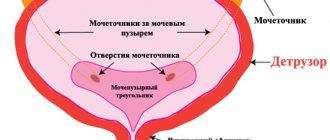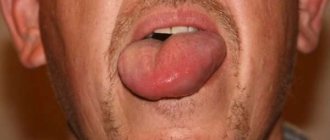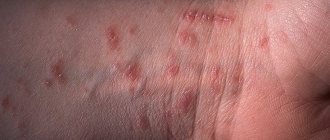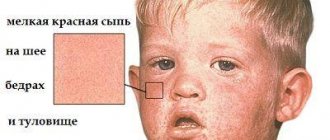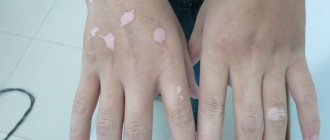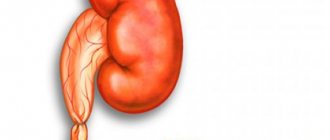Leprosy or leprosy is one of the most ancient diseases in human history. Mentions of leprosy are found in the oldest medical manuscripts of Ancient Egypt (Ebers papyrus), the biblical Old Testament, as well as the ancient Indian Vedas of the 15-10th century BC.
Previously, leprosy was considered an absolutely incurable disease; those with leprosy were expelled from society and were doomed to a slow and painful death. Since leprosy is a contagious disease, patients had to wear special bells, sounding a warning to others about their approach so that they had time to run away. At that time, people did not know that the causative agent of leprosy is not transmitted by touch. The superstitious fear that those with leprosy caused in others became the reason that such people were considered “unclean,” cursed and “marked by the Devil” for their sins.
The sick were deprived of all social rights: they could not visit crowded places and churches, drink water from the river or wash in it, touch the things of healthy people and even just be near them. Despite the negative attitude of the church towards divorce, the presence of leprosy in one of the spouses was considered an absolutely legal and official reason for the immediate dissolution of the marriage.
During his lifetime, a person with leprosy was buried in church, symbolically buried and driven out of the city, giving him a heavy robe with a hood and bells that jingled as he walked.
By the end of the fourteenth century, leprosy was widespread throughout all European countries. In this regard, society began to think about more effective methods of isolating patients. Mentions of leper colonies, where leprosy patients could count on minimal medical care, food and a roof over their heads, date back to the sixteenth century AD (the first attempts to open leper colonies were noted in the 11th century). Such institutions were located on the territory of monasteries, where monks cared for lepers.
Thanks to the creation of leper colonies, by the end of the sixteenth century, leprosy had practically receded. Currently, leprosy occurs in Africa, Asia, and South America. In Russia, leprosy occurs once every 1-2 years. There are three leper colonies for people with leprosy (there were sixteen leper colonies in the Soviet Union) in Stavropol, Krasnodar and Astrakhan.
The causative agent of leprosy was discovered and studied in 1873 by the Norwegian doctor Gerhard Hansen. He discovered Mycobacterium leprosy in the tissues of patients and established their similarity to Mycobacterium tuberculosis.
In 1948, Raoul Follero, a French public figure, writer, poet and journalist, founded the Order of Charity for those suffering from leprosy. In 1953, he also established World Leprosy Day, and in 1966 he founded the European Federation of Leprosy Associations.
Leprosy - what is it?
Leprosy (leprosy) is a chronic infectious disease accompanied by damage to the skin, peripheral nervous system, eyes and mucous membranes of the upper respiratory tract.
The causative agent of leprosy is Mycobacterium leprae. ICD 10 code – A30.
Is leprosy curable now?
At the moment, patients are provided with specialized medical care. In cases where treatment is started at an early stage, the disease does not lead to disability. Many patients with leprosy living on the territory of leper colonies are not contagious and can freely be in society, but they prefer to stay on the territory of the leper colony, fearing to encounter leprophobia among others.
With adequate treatment, the disease does not lead to death.
Causes of leprosy disease
Leprosy (also called Hansen's disease, lazy or mournful disease) is a mildly contagious disease. Less than thirty percent of people are susceptible to leprosy.
The disease often occurs in relatives (familial cases), which suggests a hereditary predisposition to the disease.
The famous physician Danielsen, in the mid-nineteenth century, studied the mechanism of transmission of leprosy and the pattern, as well as the stages of its development. For this purpose, he injected himself with the blood of patients infected with leprosy, but he never managed to get sick himself.
At-risk groups
Let us further consider a disease such as leprosy. What kind of disease this is and how it arises is clear. Now we need to talk about the risk group, i.e. about those people who are more likely to become infected with it:
- These are people who either live or go on business trips to potentially dangerous regions (especially some areas of countries such as India, Egypt, Nepal, China).
- People who have a genetic mutation on the sixth chromosome (at region q25). It is this that influences the susceptibility to contracting this disease.
- Raising certain animals that may carry the disease can also pose a risk. These are armadillos or chimpanzees.
How is leprosy (leprosy) transmitted?
The pathogen is transmitted by airborne droplets. The entry point for infection is the mucous membranes of the upper respiratory tract (upper respiratory tract). Isolated cases of infection have been reported during tattooing and after surgical interventions.
Infection is also possible through prolonged skin contact.
The possibility of transmission of Mycobacterium leprosy through soil or water is being considered. In addition to humans, the source of infection can be the nine-banded armadillo, monkey or buffalo.
The incubation period for leprosy can last from six months to several decades. The literature describes a case where the incubation period of leprosy lasted almost forty years.
Generally, the incubation period for leprosy is three to nine years.
Due to its slowly progressing symptoms and long incubation period, leprosy is called a “lazy disease.” The causative agents of leprosy belong to the class of intracellular macrophage parasites, which are capable of intensive and rapid reproduction only in laboratory conditions. In life, the long incubation period is due precisely to the slow growth and reproduction of the pathogen in cells.
Causes of the disease
The occurrence of leprosy is possible only as a result of bacterial infection from a person who is already sick or is a carrier of an infectious pathogen. Despite the fact that the disease affects the skin, the bacterium is transmitted by airborne droplets. It is enough just to talk to a person with leprosy for the infection to occur on the mucous membrane of the nasal canals or oral cavity. After this, the pathogenic microorganism penetrates the blood and an incubation period begins, which ends with the development of an acute form of leprosy with symptoms characteristic of this disease.
The following causative factors are identified that contribute to bacterial infection with leprosy:
- living in tropical countries with high levels of atmospheric humidity, where leprosy infection feels best and is able to maintain its viability for a long period of time in environmental conditions;
- low standard of living associated with unsanitary conditions, lack of basic conditions for taking water procedures, washing and changing linen;
- consumption of drinking water contaminated with biological waste in the form of sewage;
- poor nutrition and consumption of foods containing small amounts of vitamins, minerals, complex carbohydrates, proteins and fats of animal origin;
- a weak immune system, the reduced functionality of which is due to the presence of concomitant chronic diseases of infectious etiology;
- the presence of a blood disease such as AIDS.
Each case of leprosy infection is individual, so it is quite possible that there may be other reasons for the development of leprosy in a person who, until the moment of infection, led a completely healthy lifestyle and did not have any prerequisites for this dermatological disease.
Is leprosy contagious?
Leprosy is contagious, however, it is a low-contagious infection.
Even out of thirty percent of patients with a predisposition to leprosy, only ten percent become ill. Men have the disease three times more often than women. There is also a hereditary predisposition to the disease. Children get leprosy more easily and quickly than adults.
Most people have a high level of immune protection against leprosy.
The indicator of immune defense and resistance also plays an important role in the development of the form of the disease in infected patients.
The role of hormonal levels is also noted in the development of leprosy and the reduction of the incubation period. The first symptoms or exacerbation of old symptoms may be associated with the onset of puberty, pregnancy or childbirth.
It should be noted that leprosy develops cellular immunity. Its severity is minimal after undergoing lepromatous or diform type and maximum after tuberculoid leprosy (the tuberculoid form is forty times less infectious than the lepromatous form).
The development of tuberculoid leprosy is typical when the patient is slightly infected. With massive invasion of the pathogen, the immune response is almost completely suppressed and lepromatous leprosy develops.
Classification of leprosy
Stages of disease development:
- Stationary;
- Progressive;
- Regressive;
- Residual.
According to the generally accepted classification, there are 4 main clinical types of leprosy: lepromatous, tuberculoid, undifferentiated and borderline (dimorphic). Undifferentiated leprosy is considered an early manifestation of the disease, from which two polar clinical and immunological variants subsequently develop - lepromatous or tuberculoid. The most malignant type, lepromatous leprosy, is characterized by the presence of large quantities of mycobacteria in the body and the negative nature of the lepromin test. With a relatively favorable, tuberculoid type of leprosy, on the contrary, there is a small amount of the pathogen and a positive lepromin reaction.
During each type of leprosy, stationary, progressive, regressive and residual stages are noted. The first two stages are characterized by leprosy reactions - exacerbation of foci of the disease, despite the therapy.
Leprosy symptoms
After the end of the long incubation period, patients may experience a long latent period of the disease. Symptoms of leprosy disease in the prodromal period can manifest as malaise, neuralgic pain, soreness in muscles and joints, muscle weakness, disorders of the gastrointestinal tract, and periodic fever. Impaired skin sensitivity in the initial stage can manifest itself as either a decrease or an increase in sensitivity.
Later, specific symptoms of leprosy appear. The lepromatous, undifferentiated and tuberculoid variants of leprosy are most often distinguished.
In the tuberculoid variant of leprosy, lesions of the skin and peripheral nervous system are observed.
Photo of leprosy disease:
Tuberculoid leprosy
Skin damage is manifested by the appearance of vitiligo-like spots (the spots have clear, sharply defined boundaries and have no pigmentation) or bright red-violet spots with a pale area in the center.
Read further: All types and photographs of erythema, symptoms and treatment
These formations are located asymmetrically. The skin in these areas completely loses sensitivity. In children, the tuberculoid form of leprosy can proceed according to the juvenile type, with the formation of several inconspicuous spots that subsequently disappear.
The progression of the tuberculoid form of leprosy is accompanied by the appearance of flat and dense purple papules along the periphery. At the confluence of papules, large or medium-sized plaques are formed that have a bright purple tint. Some patients have a ring-shaped plaque configuration.
In the center of the plaques, depigmented, atrophic foci may develop. Foci of depigmentation and severe peeling may form around them.
A distinctive feature of this form of leprosy is that temperature and pain sensitivity disappears first. Tactile sensitivity in patients can persist for a long time.
Also, in patients with this form of leprosy, damage to the peripheral nervous system is noted, with the formation of compacted cords along the nerve fibers. It should be noted that damage to the nervous system in the tuberculoid type is much easier than with the development of lepromatous neuritis or polyneuritis.
In the future, these symptoms are accompanied by a complete lack of sweating, impaired thermoregulation, dullness and hair loss (including eyelashes and eyebrows).
The undifferentiated type is intermediate between the tuberculoid and lepromatous course of leprosy. This variant occurs in patients with uncertain immune reactivity. Therefore, after some time, the undifferentiated type transforms into another variant of the disease.
The lepromatous variant of leprosy is the most severe.
Photos of leprosy patients:
Lepromatous leprosy
This variant of leprosy is accompanied by specific lesions of the skin, as a result of which leprosy nodules are formed, in which the causative agent of leprosy multiplies intensively. Lepromas lead to deformation of the brow ridges and nose of the patient (with destruction of the cartilaginous septum), contributing to the formation of a “lion-like” or “fierce” face.
Lepromas have a purple-cherry hue and unclear borders. In addition to the face, these nodes affect the skin of the extremities. In the initial stages, the tubercles have a greasy, greasy sheen. In the future, their surface may ulcerate, and the addition of a hemorrhagic component is also possible, due to which they acquire a reddish-rusty tint. The appearance of sharply deepened wrinkles on the face is noted (due to severe infiltration of the skin).
Sensitivity loss occurs later than with the tuberculoid type. The lepromatous type of leprosy is accompanied by destruction and severe deformation of small joints and loss of fingers.
This type of leprosy is also accompanied by severe damage to the eyes (up to complete blindness), vocal cords, lymph nodes, damage to peripheral nerves and the development of motor disorders.
The progression of lepromatous leprosy is accompanied by delamination and destruction of bones, muscle atony and atrophy, cessation of the sweat and sebaceous glands, and severe disorders of the endocrine system.
The kidneys, spleen, liver, etc. are affected. Men may experience sclerosis of the prostate gland, severe epididymitis, orchiepididymitis.
Contrary to prejudices
Leprosy is not transmitted by the simple touch of a sick person and is not always fatal. Only about 10% of those exposed to the disease actually become ill. Most people have the necessary level of immunological protection against the pathogen.
Infection mainly occurs due to prolonged direct skin contact, less often through inhalation of bacteria entering the air from the patient’s nasal cavity or mouth. There are versions that only 30% of people are clinically susceptible to leprosy and that the disease itself is genetically determined. But, despite the fact that some features of the disease are still the subject of debate among scientists, two main types of leprosy are known:
The face of a 24-year-old leprosy patient. 1886 Photo: wikipedia.org
Lepromatous - affects the skin where mycobacteria multiply, causing the formation of nodules called lepromas. Large folds gradually form, and the patient develops a “lion’s face.” When lepromas disintegrate, the nose becomes deformed and the phalanges of the fingers begin to fall off. This is the most severe and malignant form of the disease.
Tuberculoid - mainly affects the skin, peripheral nerves, and sometimes internal organs. Skin lesions are insensitive, asymmetrical, and reddish-brown in color. Tuberculoid leprosy is 40 times less contagious than the leprosy form.
There is also a borderline form of the disease, which usually develops into one of two main types. The juvenile form of leprosy occurs in children and is expressed in many unnoticeable spots on the skin. The indefinite form is the most favorable - several spots appear on the skin, but after a few months the spots disappear, as if the disease goes away on its own.
To make an accurate diagnosis against the background of clinical signs, bacterioscopic and histological examinations are always carried out.
Diagnosis of leprosy
The diagnosis can be suspected based on specific skin lesions and sensory disturbances. Also, contact with a leprosy patient plays an important role.
Diagnosis of leprosy
If leprosy is suspected, a bacterioscopic examination of material (scraping) from the nasal septum, skin and node biopsies must be performed.
An important role is played by the performance of specific functional tests (histamine, lepromine, morphine, nicotinic acid tests).
Differential diagnosis is carried out with syphilis and psoriasis.
Leprosy treatment
Currently, leprosy is considered a curable disease. With timely seeking medical help and early initiation of therapy, the disease does not lead to disability.
The main cures for leprosy are:
- Rifampicin®;
- Dapsone®;
- Lampren®.
Photo of Rifampicin® in the form of capsules of 150 mg.
For multibacterial forms, a special regimen is prescribed that includes all three drugs. For paucibacillary leprosy, two medications are prescribed. Treatment takes from six months (minimum) to several years.
Minocycline® and ofloxacin® are considered reserve drugs.
Additionally, the use of glucocorticosteroids, vitamins, drugs that improve nerve conduction and prevent the formation of atrophies, and desensitizing agents is indicated.
Read more: Choosing strong antibiotics to treat syphilis
- about the author
- Recent publications
Anna Chernenko
Infectious disease doctor of the highest category with extensive experience. Specialist in the field of therapy of infectious diseases of various etiologies, methods of laboratory diagnostics of biomaterial.
Treatment and personal prevention
In the 50s, sulfone drugs came into practice, which ensured recovery after 2–8 years of treatment. Doctors now have effective drugs for treating leprosy in their arsenal, and with timely diagnosis, the disease can be completely cured. But the duration of the course on average takes about three years. A person is treated either in a leper colony or at his place of residence, if the absence of a pathogen is established.
Prevention of leprosy involves careful adherence to personal hygiene rules. According to Gerhard Hansen himself, cleanliness and soap are the main enemies of leprosy.
Today, leprosy is not a widespread disease, but, according to WHO, about 11 million people worldwide suffer from it. On the one hand, the problem of mortality and the spread of leprosy has been solved, on the other hand, it is important to remember the existence of this disease. And today the problem of late diagnosis is relevant due to the fact that doctors have begun to forget about the possibility of the emergence of individual cases of leprosy. Moreover, the disease leads to severe disability in 42% of cases, and if left untreated, patients with a severe form of the disease die within 5–10 years.
